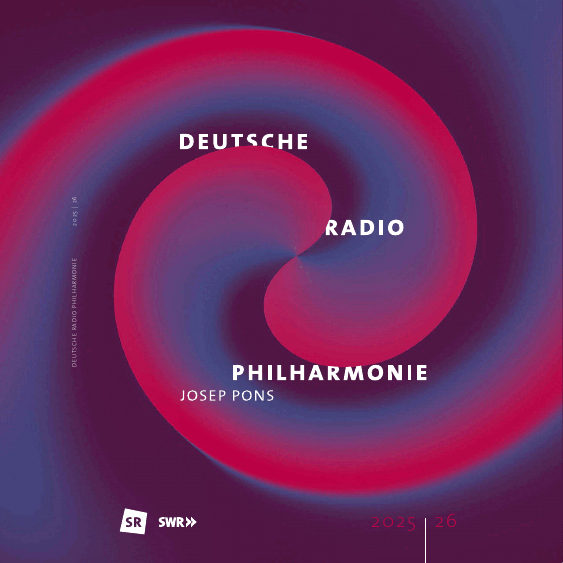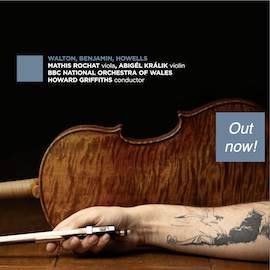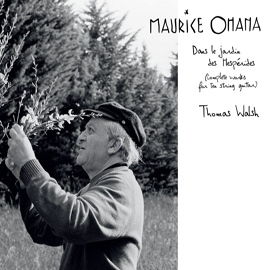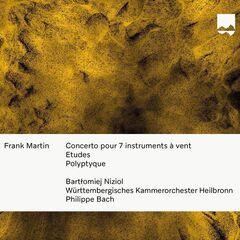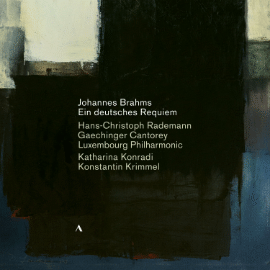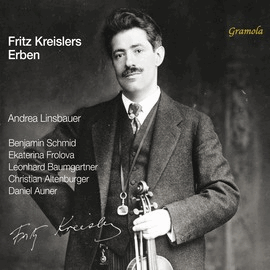Kunst soll Gestalt verleihen, so wird Frank Martin im Booklet zu diesem neuen, anregenden Album zitiert. Gestalt meint hier nicht konkrete Abbildung, sondern eher Eindruck, Stimmung, persönliches Erleben. All diese Eigenschaften finden sich in den Interpretationen der drei Instrumentalwerke des Genfer Komponisten.
Das Concerto für sieben Blasinstrumente, Streicher, Pauken und Schlagzeug lässt uns an anregenden Dialogen teilhaben, an einem munteren Gespräch, das durch die feine Abstimmung der unterschiedlichen Klangfarben das Interesse stets hochhält. Ganz spannend entwickelt sich der zweite Satz, der sich um ein akkurates Ostinato wunderbar dynamisch aufbaut.
Wie stilsicher die Musiker des Württembergischen Kammerorchesters mit Frank Martins Orchestrierungskunst umgehen, zeigt sich in den Etudes. Mal haben wir ein faszinierendes, lebhaftes und quirliges Verweben von Themenmaterial in höchster Transparenz, mal gibt sich das Ensemble lässig jazzy. Es sind einmal mehr die Gestaltungskraft, die Expressivität und Intensität des Musizierens, die dieser Interpretation ihre Stärke verleihen.
Das gilt nicht minder für das abschließende Polyptyque mit einem brillanten Bartłomiej Niziol an der Solo-Geige. Brillant nicht unbedingt als Virtuose, eher als Klangarchitekt – hier mehr noch als Klangmaler in Anlehnung an die bildliche Inspiration, die Martin zu diesem Werk angeregt hat. Es ist ein Passionsgemälde aus dem Spätmittelalter, und der Komponist hat zu den sechs Sätzen programmatische Gedanken niedergeschrieben. Polyptyque soll allerdings keine illustrative Musik sein, vielleicht evokativ, vor allem aber eine sehr persönliche, eigene Stimmungen und Gefühle spiegelnde. Und so erleben wir sie auch auf dieser neuen Produktion – ein intimer Gedankenaustausch zwischen Solist und Orchester sowie gleichermaßen ein atmosphärisch packendes Tableau in sechs Bildern.
Art should give form, Frank Martin is quoted as saying in the booklet to this new, inspiring album. Shape here does not mean concrete depiction but rather impression, mood, personal experience. All these qualities can be found in the interpretations of the three instrumental works by the Geneva-born composer.
The Concerto for seven wind instruments, strings, timpani and percussion allows us to participate in stimulating dialogues, in a lively conversation that always keeps the interest high thanks to the fine tuning of the different timbres. The second movement develops in a very exciting way, building up wonderfully dynamically around an accurate ostinato.
The stylistically confident way in which the musicians of the Württemberg Chamber Orchestra handle Frank Martin’s orchestration is evident in the Etudes. At times we have a fascinating, lively and lively interweaving of thematic material with the utmost transparency, at others the ensemble is casually jazzy. Once again, it is the creative power, expressiveness and intensity of the music-making that give this interpretation its strength.
The same applies to the concluding Polyptyque, which features the brilliant Bartłomiej Niziol on solo violin. Not necessarily brilliant as a virtuoso, but rather as an architect of sound — and even more so as a painter of sound, in reference to the pictorial inspiration that prompted Martin to compose this piece. It is inspired by a Passion painting from the late Middle Age, and the composer wrote programmatic ideas for each of the six movements. However, Polyptyque is not intended to be illustrative music; perhaps it is evocative, but above all it is very personal, reflecting the composer’s own moods and feelings. This is precisely how we experience it in this new production: an intimate exchange of ideas between the soloist and the orchestra, as well as a gripping, atmospheric tableau in six parts.



